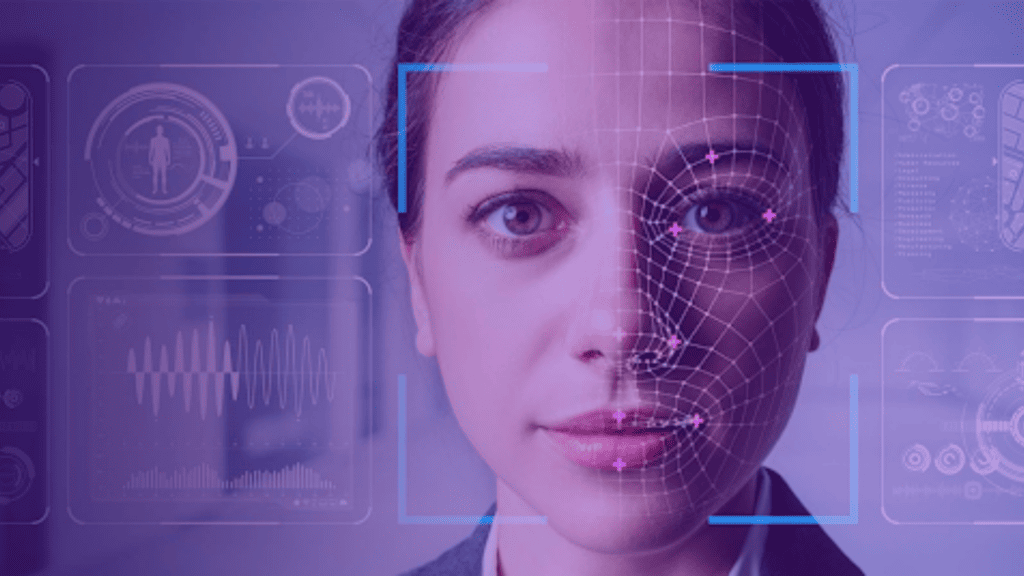Predictive analysis uses past data like sales records and consumer habits, along with special math tools, and machine learning to make educated guesses about what might happen in the future. It’s like reading the story that the data tells to get an idea of what might happen next in the market. Generative AI goes a step further. Think of it as an artist, using old data to create new details and findings. This makes our educated guesswork even better because it can spot trends or patterns we may have missed. Together, they give companies the power to make good choices for their future, based on clear information, not just hope. This way, businesses can stay ahead of their competition.
Predictive analysis, combined with generative AI, enables businesses to uncover hidden patterns in large datasets, forecast future market trends, and make informed decisions. By leveraging these technologies, companies can gain valuable insights into consumer behavior, anticipate market shifts, and adapt their strategies proactively to stay ahead in a competitive market landscape.
Harnessing Predictive Analysis in Market Trend Identification
Predictive analysis is akin to having a crystal ball for your business. It doesn’t predict tall dark strangers, but it can give you a good idea about what your customers want and how your industry is growing. In the context of market trends, predictive analysis involves sifting through current and historical data to identify patterns that might indicate future market movements and trends. This tool employs statistical algorithms and machine learning techniques to anticipate consumer behavior, sales patterns, and industry developments.
Consider this: Imagine your business as a sailboat. If you know in advance where the wind is coming from, you can adjust your sails to catch it at just the right angle. Similarly, predictive analysis helps businesses make informed decisions and strategic plans by providing insights into consumer behavior and industry developments.
Predictive analysis isn’t just about making educated guesses; it’s about turning those guesses into real strategies and plans. Here’s how it helps businesses stay ahead in the market:
- Proactive Decision Making: By identifying future trends early, businesses can proactively adjust their marketing strategies, product development, and supply chain management to align with anticipated market shifts.
- Real-Time Adaptation: Market trends can change rapidly, and predictive analysis allows businesses to adapt quickly based on real-time data, giving them an edge over competitors who may be slower to respond.
- Risk Mitigation: Understanding potential market movements enables businesses to mitigate risks associated with changing consumer preferences or external factors impacting their industry.
- Enhanced Customer Service: By anticipating consumer behavior, businesses can tailor offerings and customer service experiences to meet customer needs before they even recognize them.
- Optimized Resource Allocation: Predictive analysis helps businesses allocate resources more efficiently by focusing on areas with the highest likelihood of success based on anticipated market trends.
With these benefits in mind, it’s evident that harnessing the power of predictive analysis is essential for businesses looking to not just survive, but thrive in today’s dynamic market landscape.
With the immense potential of predictive analysis laid out before us, it’s time to consider the role of generative AI in further enhancing these capabilities.
The Role of Generative AI in Enhancing Predictive Analysis
Consider this scenario: you already possess a plethora of data on consumer behavior, market trends, and buying patterns, thanks to predictive analysis. But what if you could generate entirely novel data patterns and insights from that existing data—almost like predicting the future itself? That’s where Generative AI comes into play.
Generative AI is akin to the creative artist of the AI world. It utilizes unsupervised learning to discern patterns and trends that human analysts might overlook. It’s akin to the Sherlock Holmes of pattern recognition, drawing connections between seemingly unrelated data points to unveil hidden insights. By leveraging Generative AI alongside predictive analysis, businesses gain an advantage in accurately forecasting market trends and consumer behaviors.
Let’s say you own a retail business and are striving to comprehend which products will be popular next season. Traditional predictive analysis may inform your decision based on historical sales data, but Generative AI goes a step further by creating new potential product preferences based on existing data. It can unearth latent consumer preferences that were previously concealed, leading to more precise forecasting and better-informed business decisions.
In addition to enhancing predictive analysis with new data patterns, Generative AI can assist in generating realistic scenarios for various market outcomes based on current trends and historical data. This aids businesses in simulating different strategies and their potential impact, which provides valuable insights for strategic planning and risk management.
It’s evident that the integration of Generative AI into predictive analysis offers a powerful set of tools for businesses to make informed decisions and strategic choices based on a deeper understanding of consumer behavior and market dynamics.
The seamless fusion of Generative AI with predictive analysis not only unlocks new dimensions of market insights but also presents unique challenges that demand adept navigation and innovative solutions. Let’s now delve into these complex hurdles and explore effective strategies for overcoming them.
Challenges Of Predictive Analysis Without Generative AI
While predictive analysis is a powerful tool for market trend identification, it does come with its fair share of challenges, especially when used in isolation without the assistance of Generative AI. By relying solely on predictive analysis, businesses may face limitations that hinder their ability to accurately anticipate market trends and make informed decisions. Let’s explore some of the key challenges that arise from using predictive analysis without Generative AI.
One major challenge is the inability to generate new ideas or scenarios. Predictive analysis works by analyzing historical data and identifying patterns to make predictions about future trends. However, it lacks the creativity to generate new possibilities beyond what has already been observed and recorded. Without Generative AI’s capability to create new variations and scenarios, businesses may miss out on innovative opportunities and potential breakthroughs.
Another challenge stems from the reliance on historical data alone. While historical data can provide valuable insights into past trends and behaviors, it doesn’t capture real-time or emerging factors that can significantly impact market dynamics. Without Generative AI’s ability to incorporate real-time data inputs and adapt to changing circumstances, the predictions made purely through predictive analysis may become obsolete or inaccurate.
On one hand, some argue that relying heavily on predictive analysis without Generative AI can lead to a conservative approach to decision-making. It limits businesses from exploring new avenues and taking calculated risks. In a rapidly evolving market landscape, sticking solely to past patterns might prevent organizations from adapting quickly to emerging trends or capitalizing on untapped opportunities.
On the other hand, proponents state that there are situations where sticking to historical patterns is crucial for stability and long-term success. Industries with more stable and predictable market trends, such as manufacturing or utilities, can derive value from predictive analysis without requiring Generative AI’s additional capabilities.
To understand this better, let’s consider a weather forecast analogy. Predictive analysis alone can provide accurate forecasts based on historical weather patterns. It can tell you that it will rain tomorrow based on past data. However, Generative AI allows for the consideration of additional factors like real-time satellite imagery, wind patterns, and atmospheric conditions to adapt and provide more refined predictions. These additional elements make the forecast more reliable and useful for planning activities.
In conclusion, while predictive analysis is a valuable tool for market trend identification, it does have inherent limitations when used without Generative AI. The challenges of limited creativity and reliance solely on historical data can impede businesses’ ability to accurately anticipate evolving market trends. However, there are arguments both for and against leveraging Generative AI alongside predictive analysis, depending on the industry and specific use cases. In the next section, we will explore how these challenges can be overcome through the integration of Generative AI in designing a comprehensive market trend analysis model.
Designing Market Design With Market Forecasting
Market forecasting plays a crucial role in designing market strategies and shaping the future of businesses. By utilizing predictive analysis and generative AI, organizations can gain valuable insights into market trends, consumer behavior, and industry dynamics, allowing them to design their market approach with precision. The integration of market forecasting into the process of market design enables companies to navigate the ever-evolving landscape and stay ahead of the competition.
Imagine you’re a fashion retailer planning your next collection for the upcoming season. Without any market forecasting tools, you would be shooting in the dark, hoping that your choices align with the latest trends and customer preferences. However, by incorporating predictive analysis into your market design strategy, you can leverage historical data, social media sentiment analysis, and consumer patterns to identify emerging trends and understand what styles are likely to resonate with your target audience. This way, you’ll be able to create a collection that not only meets the demands of your customers but also sets you apart from other competitors.
Market forecasting enables organizations to allocate resources more efficiently and effectively. By having insights into future demand patterns, businesses can make informed decisions about production quantities, inventory management, and supply chain optimization. With accurate market forecasts, they can avoid overstocking or understocking products, reducing unnecessary costs and ensuring customer satisfaction.
Furthermore, market forecasting allows organizations to identify potential risks and opportunities in advance. For instance, let’s consider the case of a telecommunications company looking to expand its network coverage. Through predictive analysis and generative AI algorithms, they can forecast areas with high population growth or underserved regions where demand for their services is likely to increase. Armed with this information, they can invest strategically in infrastructure development, staying ahead of competitors and capturing new markets.
Some may argue that relying solely on market forecasting might limit creativity and innovation. They argue that by relying too heavily on data and predictions, companies may miss out on niche markets or fail to disrupt the industry with groundbreaking ideas. While this concern holds some validity, it’s important to note that market forecasting doesn’t replace human intuition and creativity; rather, it complements them. Incorporating predictive analysis and generative AI into market design empowers organizations with data-driven insights that augment their decision-making process, ultimately enabling them to take calculated risks while minimizing potential pitfalls.
Market forecasting is like having a compass in uncharted territory. Just as explorers rely on compasses to navigate through unfamiliar terrain, businesses need market forecasting to guide their strategic decisions. Without a compass, explorers would be directionless, prone to getting lost or wasting time taking unnecessary detours. Similarly, without market forecasting, businesses may find themselves struggling to make sense of the market landscape and making blind choices that could lead to missed opportunities or costly mistakes.
The conjunction of market forecasting and market design is a powerful combination that drives success in today’s dynamic business environment. By harnessing the power of predictive analysis and generative AI, companies can envision the future of market trends more accurately, allocate resources wisely, identify potential risks and seize opportunities ahead of their competitors. In the next section, we will delve into real-world applications that demonstrate the tangible benefits of leveraging these advanced technologies in shaping market trends.
Generative AI in Future Market Trends
The future of market trends holds great promise, especially with the proliferation and refinement of predictive analysis and generative AI. These technologies are not only poised to enhance the accuracy of trend forecasting but also to revolutionize how businesses respond to market shifts. With deep learning models becoming more advanced, there is an exciting prospect of gaining insights into consumer behavior, industry dynamics, and economic patterns that were previously inaccessible.
One major development on the horizon is the integration of natural language processing (NLP) into predictive analytics and generative AI. This technological fusion will enable a deeper understanding of market indicators, news, and social sentiments. By contextualizing data through NLP, businesses will be able to interpret market signals more accurately, allowing for quicker reactions to emerging trends and potential disruptions.
Dynamic Trend Forecasting
With the aid of advanced generative AI algorithms, businesses can expect more dynamic and responsive trend forecasting. These algorithms have the capability of processing vast amounts of data in real time, identifying patterns, anomalies, and correlations that traditional forecasting methods may miss. As a result, businesses will be better equipped to anticipate changes in consumer preferences, competitive landscape, and supply chain dynamics.
Adaptability and Precision
As these technologies mature, businesses will gain an unparalleled level of adaptability and precision in responding to market shifts. The ability to predict evolving consumer demands with greater accuracy empowers organizations to tailor their strategies proactively, staying ahead of the curve rather than simply reacting to changes after they occur. This shift from reactive to proactive decision-making is a game-changer in maintaining competitiveness and sustainability in today’s fast-paced markets.
In summary, the future of predictive analysis and generative AI in market trends promises a transformative era for businesses. Through enhanced deep learning models, dynamic trend forecasting, and the integration of natural language processing, organizations will be able to anticipate market shifts with greater precision and respond to emerging trends more effectively. Embracing these advancements will undoubtedly be a driving force for innovation and strategic agility in the evolving business landscape.
For businesses looking for a competitive edge in an ever-evolving marketplace, harnessing the power of predictive analysis and generative AI is essential. Stay ahead by leveraging these transformative technologies!
To learn more about unleashing the power of generative AI for next gen insights, visit Discuss.




